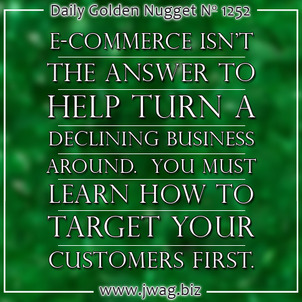 Last week, Rob Bates, News Director for JCK wrote an interesting article with theories of why the jewelry industry is in a funk.
Last week, Rob Bates, News Director for JCK wrote an interesting article with theories of why the jewelry industry is in a funk.You can read that article yourself, but in brief, the 6 theories posed were:
- People are disappointed... Which I guess means all of us in the jewelry industry are wondering when our industry will rebound from the recession like other industries have.
- The industry is consolidating... Which I do see happening.
- The millennials... This is a customer base that most jewelers do not understand.
- Lack of advertising support... Certainly true because the old methods of advertising are easily ignored by the millennials.
- Drop in metal prices... You can't survive on buying old gold because fewer people want to sell it at these prices. Yet this also means the cost of your inventory should be dropping again.
- Worldwide market is soft... In my travels to Europe, I've noticed for several years that jewelry sales are bigger in the U.S. than elsewhere.
Perhaps these are the reasons why over the last 12 months I've had an influx of requests to set up e-commerce websites. Other industries have figured out how to use the internet as a supplement to their declining in-store sales, so why can't the jewelry industry do the same?
Truthfully, it could be done, but most retail jewelers are ill equipped to take the plunge.
Having What It Takes
You can't simply set up a website with WordPress, Shoppify, or GoDaddy and expect it to sell jewelry overnight. There's a lot that goes into it long before you even make your first sale.
Here are the biggest hurdles I always see with jewelry e-commerce:
- Photography
- Merchant Setup and Security
- Marketing Budget
Photography - I don't care what you sell because no one will buy it unless your photos are perfect. Perfect means photos that are in focus, correctly lighted, and interesting. You can, and should, use a colorful photo to get attention but you need to have product photos with white backgrounds in order to make the sale. Since jewelry is reflective, shooting it on a color background always affects how it looks. Without the pure white photo, your customer could be disappointed when they receive the item in the mail, which leads to a return.
Merchant Setup - While I prefer to use a merchant payment account built right into a website, there are many other services available now that allow you to process a customer payment without the merchant setup and security concerns. PayPal is the big name that comes to mind as an alternative to your own merchant account. Your hosting company might provide a payment gateway as well, but they would get a percentage of your sale.
Marketing Budget - I've spoken to many small business owners that believe that customers will race to them simply if they set up a website. Sadly, nothing could be further from the truth. They won't find you at all unless you advertise. Advertising includes paid online ads through Google AdWords and Facebook, but it also includes the labor cost of content building and social engagement. My general rule of thumb is that you need to spend just as much on your online marketing budget as you already do for your retail store.
A Little Extra
Even if you have those three main issues managed, there's a lot more to e-commerce success. No one will buy from you unless you are sell a unique product or you somehow provide an easy, and personalized online shopping experience.
Think of how easy Amazon.com makes it for their customers. They spend a lot of money to continually test and improve how their website works, and many other industries have closely copied their functionality.
This same technology is available for any website owner if they are willing to invest the money. This leads me back to point 3 and 4 that Rob Bates mentions in his editorial, i.e. the industry doesn't understand the millennial customer and why there's a need to use this technology.
Ultimately, jewelers are asking me if they can rush in and set up an e-commerce website without taking the time to understand it. This leads to pitfalls, disappointment, and ultimate e-commerce failure.
Baby Steps First
I absolutely agree that e-commerce is an important part of every retail jeweler's future, but you can't rush into it without understanding how it will fit into your business model.
My suggested baby steps are:
- Set up a product catalog on your website, but don't sell.
- Learn what it would take to manage that online inventory, it's harder than you might imagine.
- Learn to take really great photos, this is also harder than you might imagine, and the process will be a time-sucking blackhole until you learn the fast and efficient tricks.
- You'll need a sharp employee that will blog and socially engage customers for you.
- Test and improve how your website works.
No one should be dabbling in e-commerce until they have some experience with the above 5 steps.
Anyone can rush in and waste a lot of money trying to get it right, and with this slow state of affairs, it might seem like a good option for kickstarting your business again, but it's not.
You can't turn your business around with an e-commerce website until you truly learn who your audience is and how to target your advertising to them.








